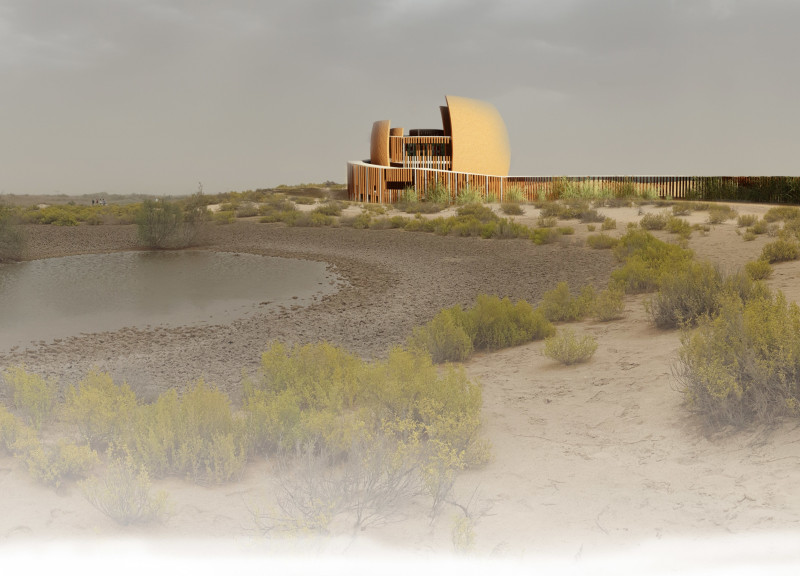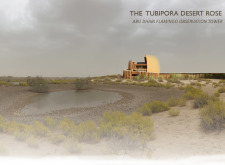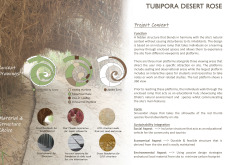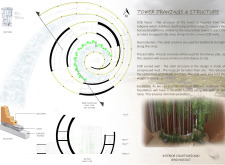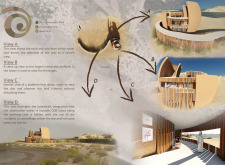5 key facts about this project
The Tubipora Desert Rose is an observation tower located in Abu Dhabi, designed for the observation of local flamingo populations. It focuses on blending with the natural environment, aiming to reduce any disturbance to wildlife while increasing awareness of ecological issues among visitors. The design uses a smooth, flowing form inspired by the red thumb species found in the area, connecting visually and conceptually with the surrounding landscape.
Design Concept
Three main platforms are incorporated into the design, each offering different views and educational experiences. A ramp leads to these platforms, guiding visitors on a journey through information about the local ecosystem. This ramp provides not only access but also a learning pathway, allowing people to engage with the diverse plant and animal life of Abu Dhabi.
Structure and Materials
The materials selected include dried reedbeds for the boardwalk, aligning with local ecological practices. The main structure is made of a COB technique, which uses a mixture of soil, sand, and straw. This choice reflects a commitment to sustainability. Steel columns support the tower, while pre-cast concrete is used for the foundation to minimize disruption during construction. A stone foundation enhances the overall durability of the structure.
Ecological Integration
Sustainability is central to the design, addressing social, economic, and environmental factors. The tower serves as a community resource that promotes interaction with local ecosystems and encourages educational activities. The careful choice of materials strengthens the tower while ensuring it remains relevant to its natural context.
The observation tower features a curved silhouette that changes with the light throughout the day, drawing attention to the wetlands and the flamingos that inhabit them. This design detail helps create a dynamic visual experience for the visitors, linking them closely to the environment.


